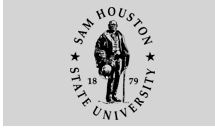Truth Be Told--A Bearkat is NOT a Kinkajou OR a Binturong
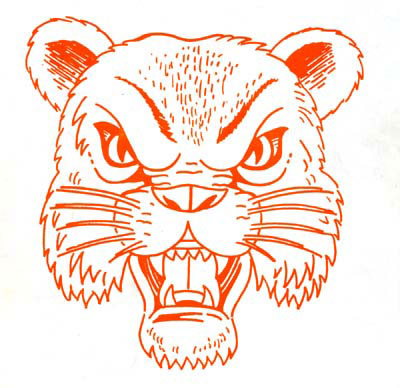 |
This is a Bearkat--It is NOT a Kinkajou or a Binturong |
It is almost Homecoming 2004, in the 125th year of Sam Houston
State University's existence, and a good time perhaps to
clear up at least a half century of confusion about the university
mascot.
As loyal Bearkats, we are often asked just what a Bearkat is. Sometimes we give
the wrong answer, according to George W. Lantrip, an alum who now works
as a research staff member for the Brooks City-Base, formerly Brooks Air Force
Base, in San Antonio.
Before we get to Lantrip's comment, one thing must be understood.
The best evidence is that the Sam Houston mascot, the
"Bearkat," was never intended to be patterned after
a real animal.
According to the university's Web site:
"Sam Houston State University's athletic teams have been nicknamed 'The
Bearkats' since 1923 when the University's name was changed by the Texas State
Legislature from Sam Houston Normal Institute to Sam Houston State Teachers College.
(Prior to 1923, the varsity sports teams were nicknamed 'The Normals').
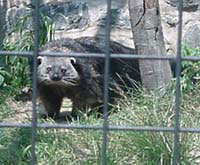 |
Binturong--This
is NOT a Bearkat
|
"Early references to 'Bearkats' spelled the name either 'Bearcats,' 'Bear
Cats', or 'Bearkats.'"
Later in that entry, it comes to the heart of the matter:
"The late Reed Lindsey, who was a student/athlete in the 1920s and later
retired as University registrar, once said that 'it was a good fighting name
of the time.' Since the animal in the saying was thought more mythical than
real, the spelling settled upon was 'Bearkat.'"
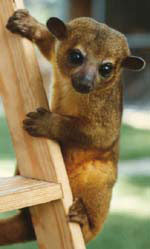 |
| Kinkajou--NOT a Bearkat |
But Lantrip saw another line that says "a bearcat actually
is a kinkajou," and
begged to differ.
"I was taught that the bearcat is the present day, Binturong, an Asiatic
civet, genus arcitilis," Lantrip e-mailed recently. "If you look
in an Oxford Dictionary, one will find such. I never heard the Kinkajou ( Honey
Bear)
defined this way."
After looking through several Websites containing information on both binturongs
and kinkajous, Today@Sam agrees.
Here are excerpts:
"The word binturong is of Malaysian origin, but the animal is commonly called "bearcat" in
English," according to Galen Berry of Houston, who first saw one of these
creatures in a Houston zoo and has since owned several.
In the Britannica Online, right beside the photo of a kinkajou,
it says, "also
called honey bear."
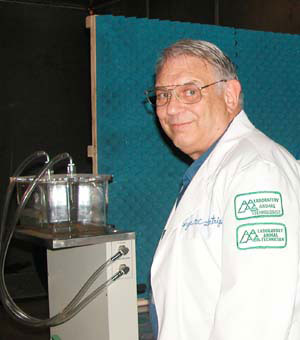 |
George W. Lantrip
('63, '93)--Animal Expert |
The true nature of our mythical Bearkat, a combination
of the fiercest fighting qualities of both the bear and cat
families (think of a grizzly/tiger cross), may have
been muddled somewhat in the 1950s when Sam Houston State
Teachers College adopted, for a short time, a live kinkajou.
The animal apparently did not do well in captivity, knowing perhaps that it
was posing as something it was not, but it hung around long enough to
cause
at least
a half century of confusion.
There have been other, equally unsuccessful efforts. Bette Craig, now an
employee in the Gresham Library, was a student in the early 1970s and remembers
feeding and cleaning a kinkajou mascot cage every day.
Lantrip, the alum who brought this to the attention of Today@Sam,
has long ties to the university, and expertise in the field
of animals.
" I entered Sam Houston State in the summer of 1960, receiving my BS in agriculture
in 1965 and MS in Agriculture in 1993," he wrote. "My mother
graduated from SH Normal Institute when Dr. Pritchett and Dr. Estill
were educators
there."
After leaving Sam Houston State, Lantrip worked in the laboratory science
field 25 years and as a registered laboratory animal technologist through
the American
Association for Laboratory Animal Science.
Unlike his alma mater's mascot, Lantrip is no myth. He won't
be able to make it for Homecoming 2004, but like true Bearkats
everywhere, says he will be here in spirit.
- END -
SHSU Media Contact: Frank
Krystyniak
Oct. 6, 2004
Please send comments, corrections, news tips to Today@Sam.edu
|


